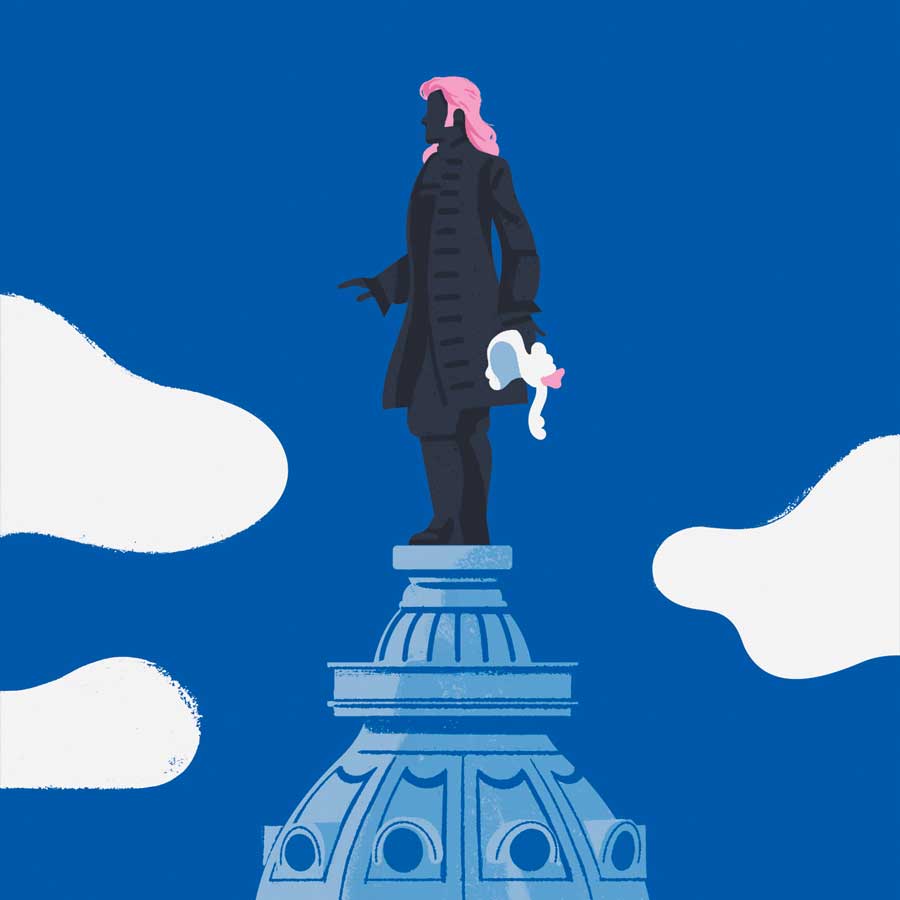Don’t Look Now, but the Mullet, History’s Most Maligned Hairstyle, Is Back
Business in the front, party in the back, and better than ever.

The mullet — yes, the mullet — is back. Illustration by Christy Lundy
A few months ago, Chelsey Crawford, a 26-year-old buyer at Urban Outfitters, walked into Washington Square’s American Mortals salon and asked for a mullet. And not some sort of pseudo-shag, but a true business-in-the-front-party-in-the-back mullet.
“It seemed like a fun way to do a riskier haircut without having to cut all my hair off,” she says.
She’s not alone. Somehow, against all odds, one of history’s most maligned cuts is mounting a comeback. In the past few years, the mullet has crept into the mainstream, on runways (Gucci, Savage X Fenty) and red carpets (Miley, Scarlett Johansson). In 2018, a group in Australia organized Mulletfest, an annual mullet competition. The festival’s website estimates that there are currently 796 million mullets out there globally. Million.
It’s not entirely surprising, this mullet renaissance. And it’s certainly not surprising that it’s landed in Philly: In the days when high powdered wigs signaled status, Ben Franklin wore a “skullet,” a version of the mullet that features a bald crown ringed by long hair. It was a strategic display of austerity, worn to convince the French monarchy that the Colonies needed more financial and diplomatic support. (A founding father! In a mullet! How subversive!)
Style is cyclical, of course; trends we vowed to bury forever — the power suits of the ’80s, the bucket hats of the ’90s — always resurface, twisted into new interpretations. So while the overall concept of the mullet is the same (yes, it’s still shorter in the front and longer in the back), today’s cut has a distinctly modern vibe. Think: more Joan Jett than Joe Dirt.
“We’re seeing a lot of shags transition into a mullet, so they’re definitely softer and not as disconnected as what we were seeing in the ’80s,” says Rachel Kolifrath, a stylist at American Mortals. “The shag gives people the courage to then go even shorter.” (Of course, some people don’t need courage: “I had a guy in my chair,” Kolifrath says, “who pulled out pictures of Mötley Crüe and was like, ‘Go crazy.’”)
For Erin Anderson, owner of Fringe Salon in South Philly, it’s about function, too. “The mullet releases a lot of weight and lets the hair’s natural texture show,” she says. “You’re not having to style it, either. The haircut itself is the style.”
Scroll through the Instagram account of either Philly salon and you’ll see a wealth of mullets: on men and women; cut in messy, shaggy layers or shaved on the sides; in pink and neon green, edgy and androgynous and wonderfully weird.
“It’s a rebellious shape,” says Anderson. “It’s a rebel haircut.”
It’s also polarizing, as rebellions often are. But perhaps that’s the point. Because whether you love or hate the mullet, you notice it. And you notice the person wearing it, someone who doesn’t mind taking a risk or raising some eyebrows.
“People have been inside for so long, and now they’re living out what they always wanted to do,” says Kolifrath. “You know: ‘I always wanted a mullet, but I was a little bit fearful of it.’ And now? They’re just going for it.”
Additional reporting by Emily Goulet.
Published as “The Great Mullet Renaissance” in the August 2021 issue of Philadelphia magazine.


